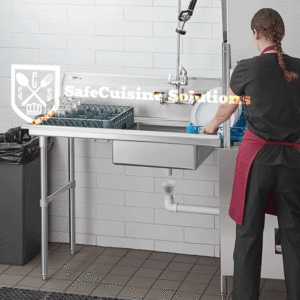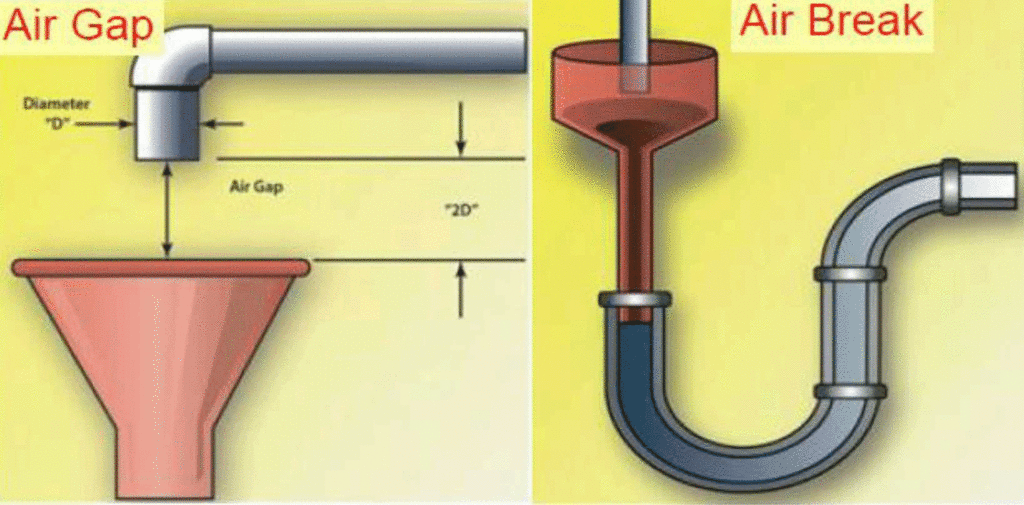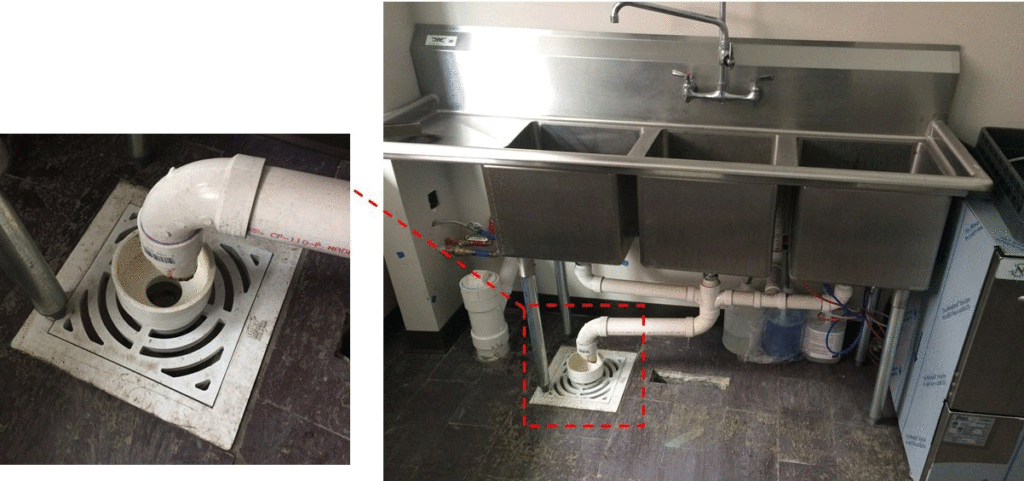
In the intricate dance of maintaining a safe and sanitary restaurant environment, certain components might seem inconspicuous but play a critical role in upholding food safety standards. Among these unsung heroes is the often-overlooked yet essential element known as the “air gap.” As inconspicuous as it may seem, the air gap is a vital safeguard that prevents the backflow of contaminants and potentially hazardous substances into your restaurant’s water supply, ensuring both your customers’ health and your establishment’s compliance with regulations.
Understanding the Air Gap:
So, what exactly is an air gap? In simple terms, it’s the physical space that separates the water supply outlet and the flood level rim of a plumbing fixture, such as a prep sink or dish sink. This space is designed to prevent any direct or indirect connection between the plumbing system and any contaminated water source, such as a drain or wastewater outlet.

Why Air Gaps Are Required:
Health departments, food safety regulators, and plumbing codes universally mandate the use of air gaps in various scenarios, especially in restaurant settings. This requirement is rooted in the fundamental principle of preventing contamination. An air gap creates a physical barrier that ensures that in the event of backflow – a situation where water flow is reversed due to changes in pressure – contaminated water from drains or sewage doesn’t siphon back into the clean water supply.
Key Functions of Air Gaps:
- Preventing Cross-Contamination: The primary role of an air gap is to prevent cross-contamination between the clean water supply and potentially hazardous substances. This is crucial in environments where food is prepared, washed, and sanitized.
- Safeguarding Public Health: By ensuring that wastewater cannot flow back into the water supply, air gaps safeguard public health by preventing the spread of waterborne diseases and contaminants.
- Meeting Regulatory Standards: Health departments and plumbing codes universally require air gaps in commercial food establishments to comply with health and safety regulations. Failing to have proper air gaps can result in severe penalties, including shutdowns and fines.
Common Applications in Restaurants:
Air gaps are particularly crucial in restaurant settings, where sinks are used for food preparation, dishwashing, and cleaning. They are required for:
- Prep sinks used for washing fruits, vegetables, and other ingredients.
- Dish sinks for washing and sanitizing kitchenware.
- Commercial ice machines to prevent backflow into the ice-making process.
- Any plumbing fixture connected to the water supply.
Air Gaps in Action:
Imagine a scenario where a prep sink’s drain line becomes clogged or blocked. Without an air gap, the water from the clogged drain could flow back into the clean water supply, contaminating it with harmful bacteria or other contaminants. With an air gap in place, however, the water would be prevented from reversing its flow, ensuring the safety of the water supply.

Maintaining Compliance:
For restaurant owners and managers, ensuring proper air gaps is a non-negotiable aspect of maintaining compliance. During health inspections, inspectors often check for the presence and adequacy of air gaps as part of their assessment of the establishment’s overall hygiene and safety practices.
Conclusion:
The air gap may be a humble and often unnoticed component of your restaurant’s plumbing, but its role in upholding food safety and regulatory compliance is far from insignificant. By embracing this small yet essential feature, you’re not only safeguarding your customers’ health but also ensuring the longevity and success of your establishment in an industry where hygiene and safety are paramount. So, the next time you’re at your restaurant’s sink, take a moment to appreciate the unassuming air gap – a true guardian of your restaurant’s water supply and its patrons’ well-being.

